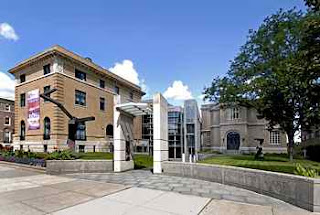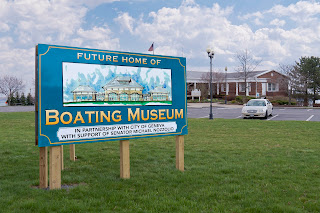In January 2012, the Society of American Archivists (SAA), the national professional association for archivists and other information professionals responsible for historical records, approved the formation of the Students and New Archives Professionals Roundtable (SNAP). A much-needed and welcome resource for those considering, actively pursuing, or transitioning into the archives profession, SNAP was founded by its current chair, Rebecca Goldman, who is also Media and Digital Services Librarian at La Salle University in Philadelphia and the author of the popular archives webcomic Derangement and Description.
The Archivists Round Table of Metropolitan New York recently chatted with Goldman about her decision to form SNAP, SNAP’s goals and future direction(s), archival education and professional involvement, opportunities for students and new professionals in the tight job market, and other SNAP-ish themes.
ART: What was the main impetus for your establishing the SNAP Roundtable?
RG: Ever since my first Annual Meeting in 2010, I’ve been thinking about the representation of new archivists within SAA and within the profession. I put up a comic that summarized all the things I was thinking about, and it generated some good discussion, but nothing really came of it. Then, about a year ago, I read that ALA had started a Young Professionals Working Group, and thought, hey, why doesn’t SAA have a group like that? I posted my question to Twitter, Council member Kate Theimer saw it and suggested I try to start a roundtable, and the rest, I suppose, is history. Any SAA member can propose a new roundtable, but until Kate suggested it, it hadn’t really occurred to me as something that I could do.
ART: The SNAP website features an impressive listing of your many goals as an organization. Looking just at SNAP’s first year, is there any goal in particular that has been or will be the main priority? What projects or initiatives reflecting this goal would you like to see happen during SNAP’s first year?
RG: When I first raised the idea of forming a roundtable for new archivists, I had the following goals in mind:
•Advocate for new archivists within SAA and within the archival profession
•Provide a space for discussion of issues affecting new archivists
•Allow new archivists to gain leadership experience through roundtable service
I think we’ve met that second goal already–the SNAP list is both a very active discussion area and a welcoming community for new archivists. We’ve also made some progress in reaching out to other SAA groups (our Liaison Coordinator, Sasha Griffin, has been really instrumental here). And SAA is definitely taking note of us. If you take a look at the agenda items for SAA’s next Council meeting, an awful lot of them mention SNAP. What’s proving more difficult is taking all the great ideas generated on our list and turning these into projects for SNAP to work on. So my goal for our first year would be to come up with a process for starting new projects: appointing leaders, documentation, tracking progress, etc. I also feel that much of the discussion has been focused on students and un(der)employed new archivists, and that our goal of supporting well-employed new archivists, as they move from entry-level to mid-career or managerial positions, has been overlooked. I’d like to keep a broader definition of new archivist in mind as SNAP moves forward.
ART: As SAA’s representative student agency, it would seem that SNAP is uniquely suited to advocate for changes and/or improvements to graduate archival education programs. Has there been any discussion along these lines thus far among the SNAP leadership? If so, in what ways does SNAP envision that archival education programs could better serve their students?
RG: Judging from recent conversations on the SNAP list, one of the biggest areas of concern is archival internships–both publicizing the need for internship or other work experience during grad school, and making sure that internships are conducted in a way that’s ethical and educational. I would love to see SNAP produce guidelines for graduate student internships. As far as changes to the educational programs themselves–we could certainly advocate for changes, but SAA doesn’t accredit archives programs, and their Guidelines for a Graduate Program in Archival Studies were just revised in 2011. Right now, I don’t see a whole lot of room for SNAP contributions in this area.
ART: Although SNAP primarily serves students and early professionals who are already pursuing careers as archivists, do you intend for SNAP to also play a leading role in SAA’s outreach efforts to recruit new professionals to the archives field? What potential strategies do you think might be effective in better promoting the archives profession as a career option?
RG: I don’t know too many new archivists who would recommend entering the archives field right now. There aren’t even enough jobs for all the recent grads. I’d rather see SAA do one or both of the following things:
•recruit related professionals–people working in jobs with archives-related responsibilities who may not identify as archivists or see the need for SAA membership. These related professionals are one of the target audiences for SNAP, because their work-related needs are similar to those of archives students and new archives professionals.
•promote the importance of archives to organizations and communities that don’t already have them. If you’re an organization and you want to start an archives, or hire an archival consultant, SAA has you covered. But that assumes you know enough about archivists to know why you’d need one. What about outreach to the people with the power to create job opportunities for new archivists?
ART: As SNAP’s Chair, what would your advice be to students and early-career archivists looking to become more involved in the professional archives community, either at the local, regional, or national level? Aside from joining SNAP, of course.
RG: SAA (and, to a lesser extent, the local and regional archives organizations) can absolutely seem intimidating as a newcomer. If you want to get involved with a group or project, just ask! Every SAA section and roundtable lists their leaders, and if you’re an SAA member you can log in to get their contact information. All the SAA leaders I’ve met would love to get more new archivists involved in their groups. I can’t speak for every regional group, but I’ve found MARAC to be pretty friendly, and they had a great session at their spring meeting explaining all the ways new members and new archivists could get involved. Local groups: I’ve tried and failed multiple times to get involved with mine. Some are awesome (like ART ![]() ), but I’ve found that small local orgs can be clique-y and very difficult to break into. As a general piece of advice, if you’re ever in a situation where you’re networking with other archivists–like a conference, or a lo
), but I’ve found that small local orgs can be clique-y and very difficult to break into. As a general piece of advice, if you’re ever in a situation where you’re networking with other archivists–like a conference, or a lo
cal meeting–assume that people are shy rather than unfriendly.
I’d also recommend starting a Twitter account and following some archivists on Twitter (Kate Theimer has a good list to start off on Twitter). The relative merits of Twitter vs. the Archives and Archivists list has been much debated, but I will say that as a new archivist I find asking questions via Twitter to be quick, easy, and not too intimidating.
Nick Pavlik is a member of the Archivists Round Table of Metropolitan New York and serves as archivist for the 92nd Street Y, one of New York City’s preeminent community and cultural institutions.









